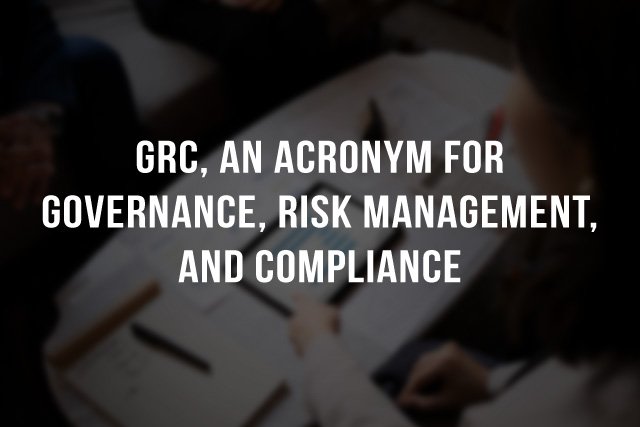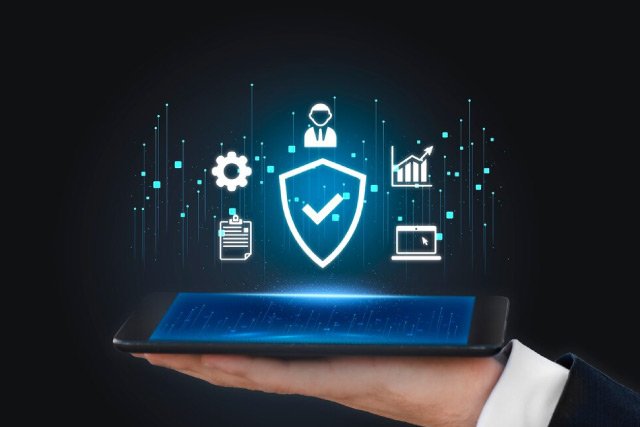In an era where digital innovation is the heartbeat of progress, safeguarding sensitive information and ensuring regulatory compliance have become non-negotiable imperatives for organizations. Enter Governance, Risk Management, and Compliance (GRC)—a strategic framework that acts as a compass in the tumultuous waters of cyber security. This in-depth guide will further explore the intricacies of GRC, its multifaceted implementation, and real-world applications and delve into why it serves as the linchpin in the evolving digital security landscape.
1. What is GRC?

GRC, an acronym for Governance, Risk Management, and Compliance, stands as a sentinel against the ever-expanding threat landscape in cyber security. It encompasses tactical approaches, protocols, and a continuous commitment to mitigating risks associated with technological activities. This holistic approach ensures regulatory adherence and identifies and fortifies potential vulnerabilities.
2. Components of GRC in Cyber Security

Component 1: Cyber Security Governance
The structural governance framework established by cybersecurity is akin to the scaffolding that supports a building. It defines roles, responsibilities, and governance models and is a dynamic entity that requires constant evaluation and refinement to remain resilient against evolving threats and regulatory changes.
Governance in GRC extends beyond the organizational boundaries, ensuring that entities comply with the ever-evolving landscape of laws, rules, and standards. Effectively communicating the cyber security program to the board and upper management is instrumental in fostering a security culture.
Component 2: Cyber Security Risk Management
The dynamic nature of cyber threats necessitates a proactive approach to risk management. From identifying potential threats to assessing their impact, implementing mitigating measures, crafting incident response plans, and ensuring continuous monitoring—the components of risk management are interwoven threads in cyber security resilience.
Component 3: Cyber Security Compliance
The tapestry of cyber security compliance involves navigating through a maze of regulations and standards. From the General Data Protection Regulation (GDPR) to the Health Insurance Portability and Accountability Act (HIPAA), compliance mandates safeguarding data, risk assessments, meticulous policy implementation, and unwavering commitment to continuous monitoring.
3. Implementing GRC in Cyber Security

The implementation of GRC in cyber security is not a mere strategic choice but a fundamental necessity for organizations seeking to fortify their digital defenses comprehensively. Forming a cross-functional team comprising members from IT, legal, compliance, and executive realms is the cornerstone for effective implementation.
4. Step-by-Step Tutorial

4.1. Formation of a Cross-functional Team
- Collaborate to establish roles, responsibilities, and decision-making processes.
- Build a unified team comprising IT, legal, compliance, and executive members.
4.2. Governance Policy Development
- Define a governance model that aligns with organizational objectives.
- Regularly evaluate and refine the framework to adapt to changing security risks.
4.3. Risk Management Implementation
- Identify and assess software, hardware, networks, and human behavior vulnerabilities.
- Prioritize risks based on their potential impact and likelihood of occurrence.
4.4. Compliance Assurance
- Stay abreast of evolving legal and regulatory requirements.
- Conduct regular audits and assessments to ensure ongoing compliance.
4.5. Continuous Improvement
- Regularly monitor the risk landscape to stay ahead of evolving threats.
- Adapt and enhance cyber security measures based on the evolving threat landscape.
5. Real-world Examples of GRC in Action

GRC is not a theoretical construct but a practical necessity, as evidenced by its applications across diverse industries:
5.1. Banking and Finance:
- AML compliance for maintaining financial integrity.
- Robust cyber security measures to uphold customer trust.
5.2. Healthcare:
- Adherence to HIPAA regulations for safeguarding patient data.
- Implementation of controls to manage and control data access.
5.3. Technology Companies:
- Adhering to GDPR to ensure data privacy.
- Enforcing secure coding techniques to fortify software integrity.
5.4. Energy and Utilities:
- Managing operational risks to safeguard critical infrastructure.
- Implementing cyber security measures to fend off potential cyber threats.
5.5. Retail and E-commerce:
- PCI DSS compliance for securing customer payment data.
- Encryption and secure transaction protocols to protect online transactions.
5.6. Manufacturing:
- Supply chain risk management to ensure operational continuity.
- Protection of intellectual property against cyber threats.
5.7. Government Entities:
- Implementation of cyber security measures to secure sensitive citizen data.
- Meeting legal deadlines for efficient service delivery.
6. Additional Insights and Perspectives

6.1. The Dynamic Landscape of Cyber Threats
The world of cyber security is in constant flux; consequently, threat actors are becoming increasingly sophisticated and innovative. In this dynamic landscape, a robust GRC framework is paramount. Furthermore, as new technologies emerge and businesses digitize their operations, the attack surface for cyber threats expands. Consequently, GRC serves as a strategic shield, enabling organizations to proactively adapt and fortify their defenses.
6.2. The Human Element in Cybersecurity
While technologies play a pivotal role in cyber security, the human element remains critical. Cybersecurity awareness and education are integral components of any GRC strategy. Employees at all levels need to be well-versed in security protocols, risk mitigation strategies, and the importance of compliance. This human-centric approach ensures every individual becomes proactive in the business’s cyber security efforts.
6.3. The Role of Artificial Intelligence (AI) and Machine Learning (ML) in GRC
In the era of AI and ML, these technologies are increasingly being integrated into GRC strategies. Furthermore, AI and ML can analyze vast amounts of data, detect patterns, and identify anomalies that may indicate potential security threats. This proactive approach enhances GRC’s predictive capabilities. Consequently, organizations can stay one step ahead of emerging cyber risks.
6.4. Continuous Adaptation and Evolution
The effectiveness of GRC lies in its ability to adapt and evolve alongside the ever-changing cyber security landscape. Furthermore, continuous monitoring, regular evaluations, and integration of emerging technologies ensure that the GRC framework remains resilient. By staying agile, organizations can effectively navigate the challenges posed by new threats, technologies, and regulatory changes.
Conclusion
In conclusion, Governance, Risk Management, and Compliance (GRC) are indispensable pillars in fortifying organizations against the evolving landscape of cyber threats. GRC becomes the linchpin for sustained success and security in an ever-changing digital realm by integrating robust governance structures, proactive risk management, and unwavering compliance measures.
FAQs
Why is GRC important in cybersecurity?
GRC is crucial in providing a comprehensive approach to managing cyber security risks, maintaining compliance, and fostering a security culture within organizations.
How does GRC support risk management?
GRC aids in risk management by identifying, assessing, prioritizing, and mitigating potential risks, ensuring that resources are allocated to address the most critical threats.
What role does GRC play in compliance?
Aligning technical operations with laws and regulations, GRC enhances security measures and demonstrates a steadfast commitment to protecting data and privacy.
How can organizations implement GRC in cyber security effectively?
Effective implementation involves forming a cross-functional team, developing governance policies, conducting risk management, ensuring compliance, and continuously improving cyber security measures.





